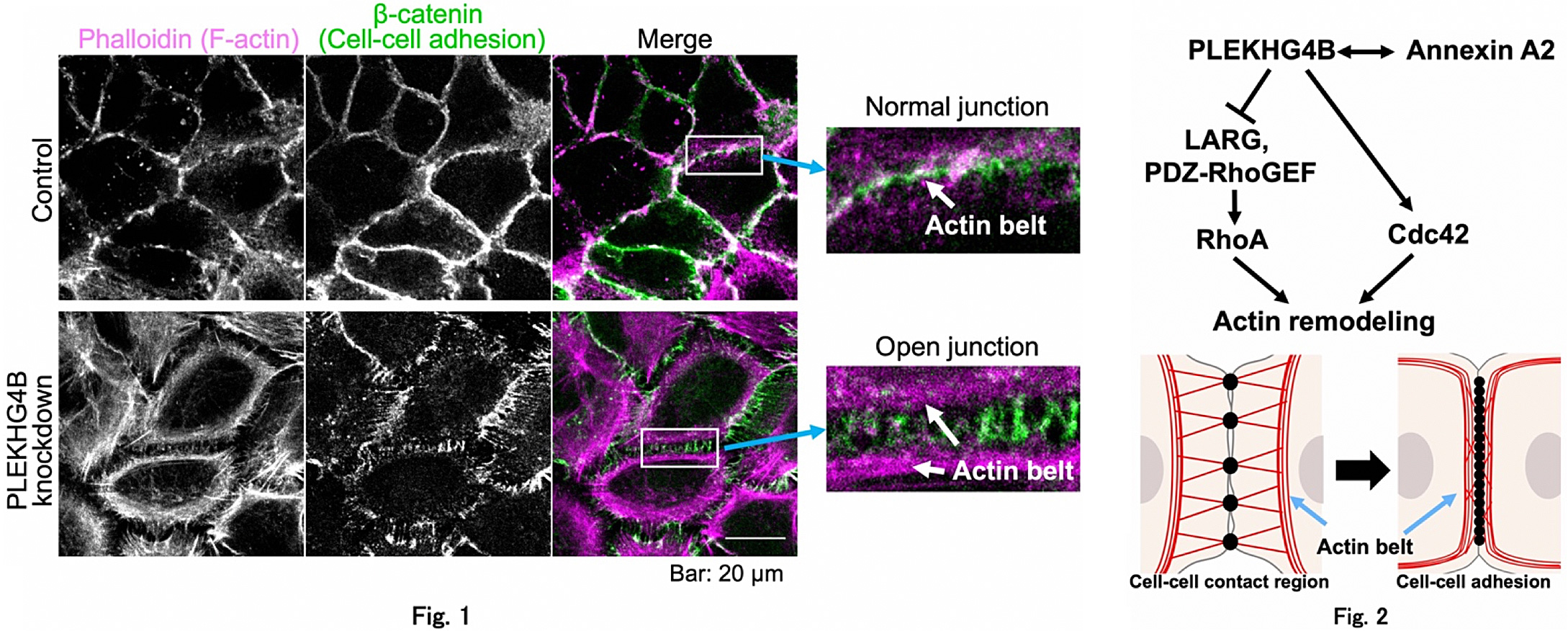The organs and tissues in our body, such as the esophagus, lungs, kidneys, liver, and glands, are composed of tubules made of epithelial cell sheets, which perform the specific functions of their respective tissues. Epithelial cells must recognize each other and build complex and orderly cell-cell adhesion structures when the cells form the cell sheet. Therefore, when epithelial cells form the cell-cell adhesion, it is thought that many proteins function to construct the complex adhesion structures. However, a large part of the processes remains unknown.
We have been studying the mechanisms of the actin cytoskeletal remodeling, which is essential to regulate cell motility and morphology. We found that PLEKHG4B, one of the Rho-GEF family proteins regulating the actin skeletal remodeling, is required to reorganize the actin cytoskeleton during cell-cell adhesion formation. In cell-cell adhesion formation, cadherin, one of the cell adhesion molecules, is the first protein to link cells together at the cell-cell contact site. The signal of the cell-cell contact from Cadherins transmits to the intracellular region and induces to form the intercellular adhesion structure. We found that depletion of PLEKHG4B by RNA interference causes that the belt-like actin bundles, which tightly hold the intercellular adhesion site, to separate from the adhesion sites (Fig. 1). We also found that PLEKHG4B inhibits LARG and PDZ-RhoGEF, which are other members of Rho-GEFs, and activates Cdc42, one of the small GTPases and that these reactions are required to induce to accumulation of actin bundles at intracellular cell-cell adhesion sites. Furthermore, we found that Annexin A2 is necessary to locate PLEKHG4B at the cell-cell adhesion site (Fig. 2).
The processes of actin cytoskeletal remodeling during the maturation of cell-cell adhesion have been observed, we first revealed one of the molecular mechanisms involved in them. We thought that the mechanism is essential for tissue morphogenesis and homeostasis by maintaining the proper condition of cell-cell adhesion.
to maintain the proper condition of cell-cell adhesion for tissue morphogenesis and homeostasis.

